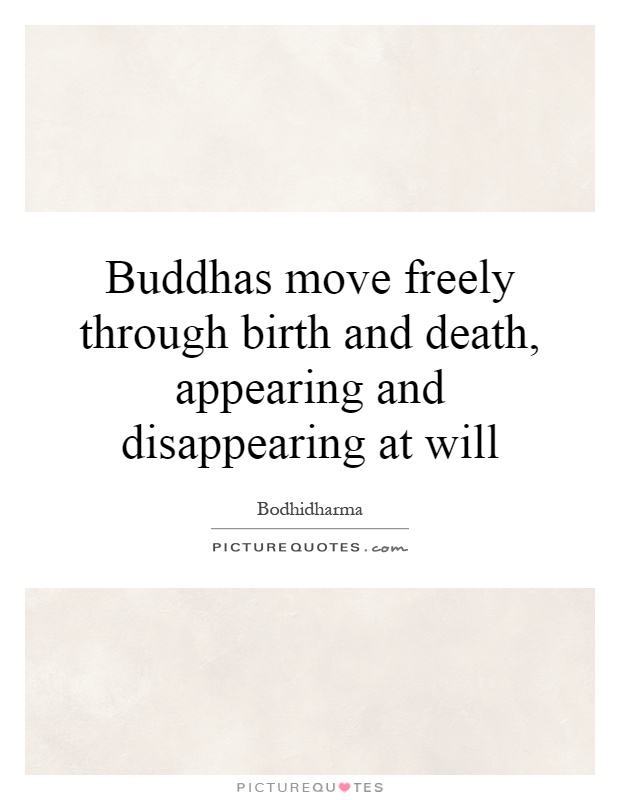Buddhas move freely through birth and death, appearing and disappearing at will

Buddhas move freely through birth and death, appearing and disappearing at will
Bodhidharma, the legendary founder of Zen Buddhism, is often depicted as a figure who embodies the idea of Buddhas moving freely through birth and death, appearing and disappearing at will. This concept is deeply rooted in the teachings of Zen Buddhism, which emphasize the impermanence of all things and the interconnectedness of all beings.In Zen philosophy, the idea of Buddhas moving freely through birth and death is a metaphor for the enlightened mind's ability to transcend the limitations of the physical world. Bodhidharma, as the first patriarch of Zen Buddhism, is said to have achieved this state of enlightenment and demonstrated his mastery over birth and death through his teachings and actions.
One of the key teachings of Zen Buddhism is the concept of non-attachment, which is the idea that clinging to desires and attachments leads to suffering. By letting go of attachments and embracing impermanence, one can free themselves from the cycle of birth and death and attain liberation.
Bodhidharma's legendary journey from India to China is often cited as an example of his ability to move freely through birth and death. According to tradition, Bodhidharma traveled to China in the 6th century and eventually settled at the Shaolin Temple, where he is said to have meditated facing a wall for nine years. This act of intense meditation is seen as a demonstration of his ability to transcend the limitations of the physical world and achieve enlightenment.
Throughout his life, Bodhidharma emphasized the importance of direct experience and self-realization in the practice of Zen Buddhism. He encouraged his followers to look within themselves for the answers to life's deepest questions and to cultivate a sense of inner peace and contentment.












 Friendship Quotes
Friendship Quotes Love Quotes
Love Quotes Life Quotes
Life Quotes Funny Quotes
Funny Quotes Motivational Quotes
Motivational Quotes Inspirational Quotes
Inspirational Quotes